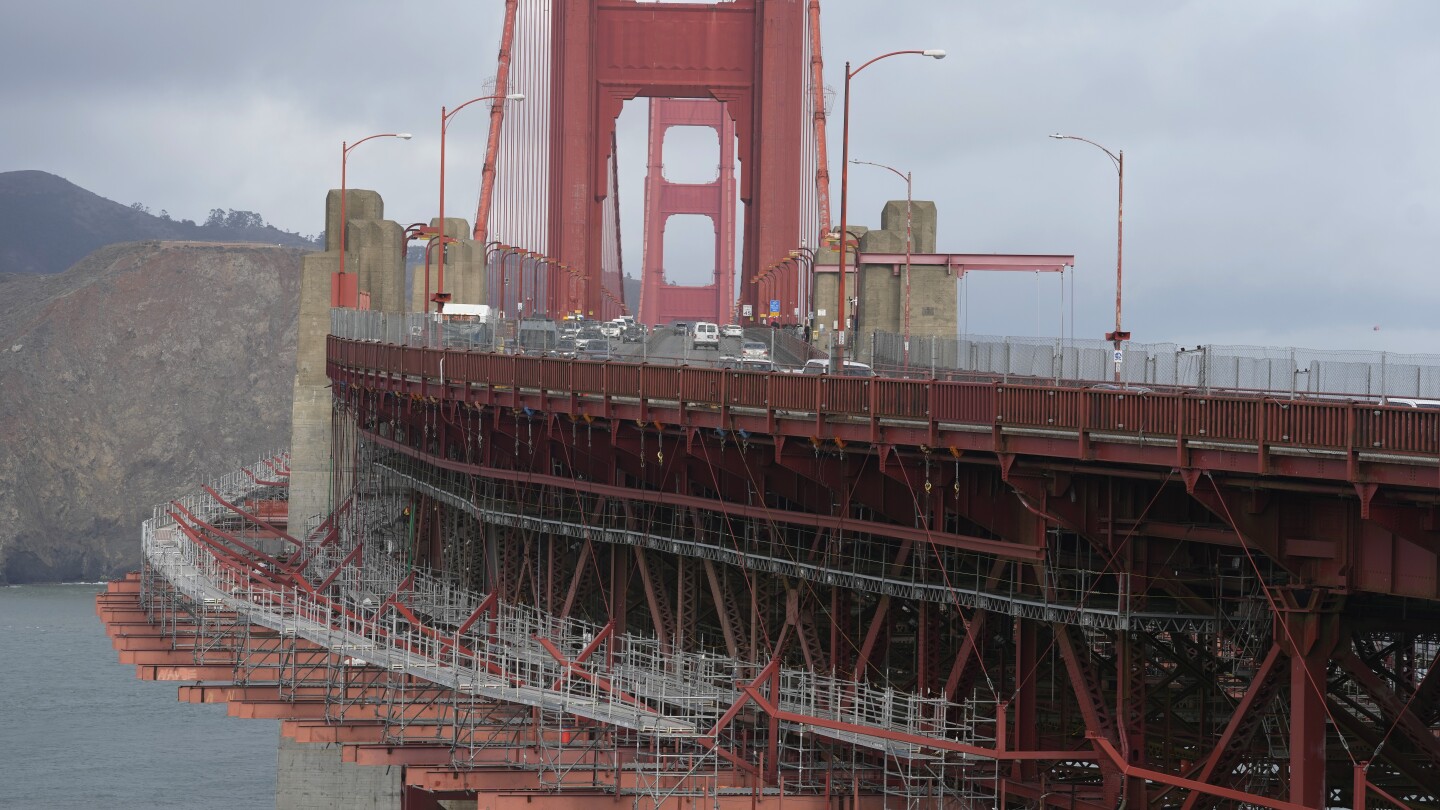Kevin Hines regretted jumping off San Francisco’s Golden Gate Bridge the moment his hands released the rail and he plunged the equivalent of 25 stories into the Pacific Ocean, breaking his back.
Hines miraculously survived his suicide attempt at age 19 in September 2000 as he struggled with bipolar disorder, one of about 40 people who survived after jumping off the bridge.
Hines, his father, and a group of parents who lost their children to suicide at the bridge relentlessly advocated for a solution for two decades, meeting resistance from people who did not want to alter the iconic landmark with its sweeping views of the Pacific Ocean and San Francisco Bay.
On Wednesday, they finally got their wish when officials announced that crews have installed stainless-steel nets on both sides of the 1.7-mile (2.7-kilometer) bridge.
“Had the net been there, I would have been stopped by the police and gotten the help I needed immediately and never broken my back, never shattered three vertebrae, and never been on this path I was on,” said Hines, now a suicide prevention advocate. “I’m so grateful that a small group of like-minded people never gave up on something so important.”
Nearly 2,000 people have plunged to their deaths since the bridge opened in 1937.
City officials approved the project more than a decade ago, and in 2018 work began on the 20-foot-wide (6-meter-wide) stainless steel mesh nets. But the efforts to complete them were repeatedly delayed until now.
The nets — placed 20 feet (6 meters) down from the bridge’s deck — are not visible from cars crossing the bridge. But pedestrians standing by the rails can see them. They were built with marine-grade stainless steel that can withstand the harsh environment that includes salt water, fog and strong winds that often envelop the striking orange structure at the mouth of the San Francisco Bay.



What’s the point? Someone who wants to kill themselves will probably find another way. It’s not like there’s a shortage of ways to commit suicide. I could literally list 1000 ways to do it in this comment but I’m too lazy.
“Oh man, there’s a net over the bridge, I guess I’m not killing myself now. Oh well.” — Someone living on an 8th floor.
Go for the root cause and attack the mental health issues…
deleted by creator
So we’re tackling a fraction of the suicides (only impulse) from the 2000 people who killed themselves in that place over 100 years. So 20 people per year. Let’s say 50% of those were caused by impulse because we have no statistics. 10 per year in a city with 2.5K suicides per year.
Someone who wanted to commit suicide by impulse and didn’t do it there will probably feel the impulse again somewhere else. So again, doing the 50% rule, let’s say you saved only 5 of the 10.
Go for the root cause. This is just a waste of money.
deleted by creator
I’m wrong because I’m saying they could have invested this money tackling the root cause which would have saved many more lives? OK.
What if, and it’s just a thought, they invested in tackling the root cause and did preventative measures at suicide hotspots to help prevent suicide and we don’t criticize anyone for at least succeeding at one of those two?
The cost is 76 million without maintenance. Is that reasonable? That amount of money invested in mental Healthcare could have saved more people.
Yes, it is reasonable if it stops suicides. How about investing money in both?
Even in countries with robust mental healthcare have suicides.
So it is reasonable to put nets in every window then? Or when does it stop being reasonable? My point is that the amount of people this will stop doesn’t justify the investment. Would it be reasonable if it stopped 1 person per decade?
“Yes because it saves lives”… No… It wouldn’t. “It saves lives” is not a valid argument. The valid argument would be the cost-benefit. The point is that the cost doesn’t justify the benefit in this scenario, and they could get a higher benefit doing something else with the money.
I can’t believe I have to explain things like this, like I’m talking to a teenager.
What about having a robust mental Healthcare before throwing money at anything like this?
It’s harsh but I agree, seems like not seeing the forest. This money probably could’ve saved more people were it used more efficiently. Are we gonna do netting around every tall thing in this world?
Damn bro, just admit when you’re wrong and move on.
I’d argue the real root of the problem is the disparity in wealth.
I don’t know, do we have demographics on suicide per income levels?
More equal societies are happier ones.
Makes sense, it’s not about who is rich and poor but about being equals.
deleted by creator
It looks like it’s still saving the people that made impulsive decisions, and for everyone else more determined, you’re right they will still go.
But a life saved is a life saved my dude, and about 30 people a year were jumping off before the net, you can’t assume every one of them will just off themselves somewhere else.
I’m not saying “don’t save lives”, I’m saying “you could have saved more lives with the same money”
While that’s true, you literally started the conversation asking what the point was, and the few saved lives is the point.
It’s also impossible to calculate the amount of lives saved over time from the preventative effect of people deciding not to use it now since it may not work.
They can always raise more money to now spend elsewhere, but those lives lost are forever.